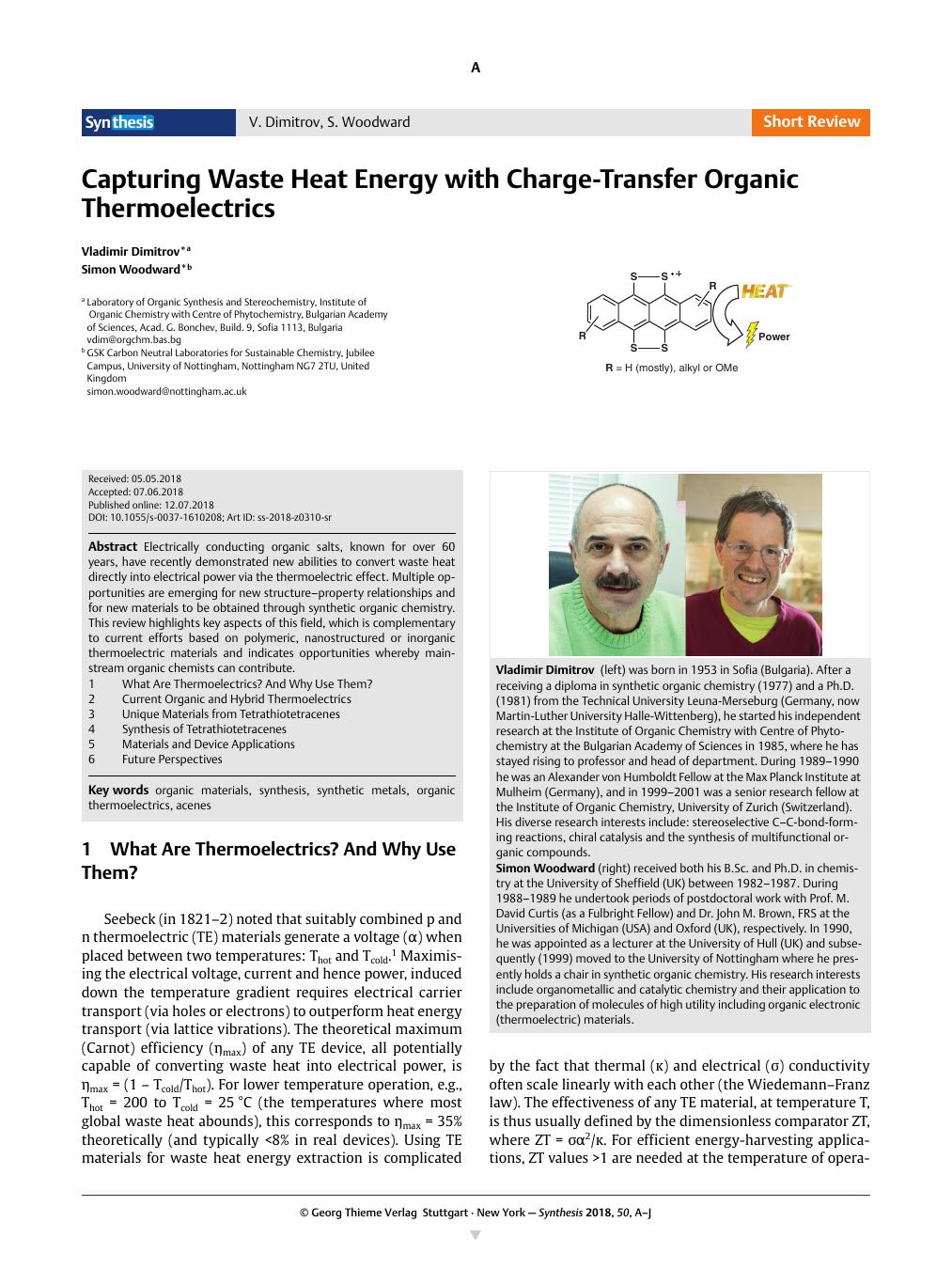Synthesis ( IF 2.2 ) Pub Date : 2018-07-12 , DOI: 10.1055/s-0037-1610208 Vladimir Dimitrov 1 , Simon Woodward 2

|
Abstract
Electrically conducting organic salts, known for over 60 years, have recently demonstrated new abilities to convert waste heat directly into electrical power via the thermoelectric effect. Multiple opportunities are emerging for new structure–property relationships and for new materials to be obtained through synthetic organic chemistry. This review highlights key aspects of this field, which is complementary to current efforts based on polymeric, nanostructured or inorganic thermoelectric materials and indicates opportunities whereby mainstream organic chemists can contribute.
1 What Are Thermoelectrics? And Why Use Them?
2 Current Organic and Hybrid Thermoelectrics
3 Unique Materials from Tetrathiotetracenes
4 Synthesis of Tetrathiotetracenes
5 Materials and Device Applications
6 Future Perspectives
Electrically conducting organic salts, known for over 60 years, have recently demonstrated new abilities to convert waste heat directly into electrical power via the thermoelectric effect. Multiple opportunities are emerging for new structure–property relationships and for new materials to be obtained through synthetic organic chemistry. This review highlights key aspects of this field, which is complementary to current efforts based on polymeric, nanostructured or inorganic thermoelectric materials and indicates opportunities whereby mainstream organic chemists can contribute.
1 What Are Thermoelectrics? And Why Use Them?
2 Current Organic and Hybrid Thermoelectrics
3 Unique Materials from Tetrathiotetracenes
4 Synthesis of Tetrathiotetracenes
5 Materials and Device Applications
6 Future Perspectives
中文翻译:

用电荷转移有机热电器件捕获废热能
摘要
导电有机盐已经有60多年的历史了,最近已展示出通过热电效应将废热直接转化为电能的新功能。新的结构-性质关系以及通过合成有机化学获得新材料的机会正在涌现。这篇综述重点介绍了该领域的关键方面,与当前基于聚合物,纳米结构或无机热电材料的研究相辅相成,并指出了主流有机化学家可以做出贡献的机会。
1什么是热电学?以及为什么要使用它们?
2当前的有机和混合热电
来自四硫代四环素的3种独特材料
4四硫代四环素的合成
5材料和设备应用
6未来展望
导电有机盐已经有60多年的历史了,最近已展示出通过热电效应将废热直接转化为电能的新功能。新的结构-性质关系以及通过合成有机化学获得新材料的机会正在涌现。这篇综述重点介绍了该领域的关键方面,与当前基于聚合物,纳米结构或无机热电材料的研究相辅相成,并指出了主流有机化学家可以做出贡献的机会。
1什么是热电学?以及为什么要使用它们?
2当前的有机和混合热电
来自四硫代四环素的3种独特材料
4四硫代四环素的合成
5材料和设备应用
6未来展望











































 京公网安备 11010802027423号
京公网安备 11010802027423号